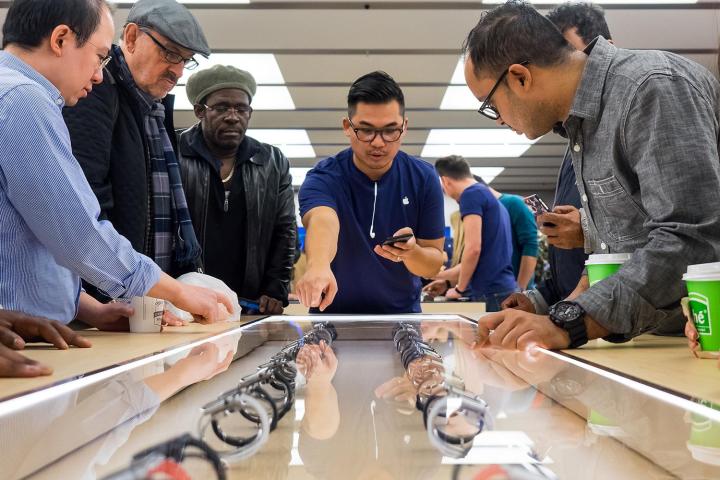
Why so many watches?
I’ve been writing a weekly column about wearables for roughly a year now, so I’d be embarrassing myself if I weren’t wearing at least two devices on my person at all times, just in case a reader should ever stop me on the street. Alright, that last bit was a lie. The actual answer is far more boring. Let’s just say it involves a sexy thing I like to call “comparing pedometer accuracy.”
The smartwatch is like a child actor growing up with two movie-star parents.
Today marks my final “Wear Next” column — sadly just a few weeks after we got some fancy new graphics. I’ll be moving on to other things (and, naturally, monitoring my daily step count in the process), but given how much of this space we devote to predicting the future, this seems like a good opportunity to step back and examine the state of wearable tech.
It’s perhaps most telling that, after multiple declarations about this being the “year of the wearable,” the vast majority of stories regarding sales are still forward looking. While the wearable space is undoubtedly growing, it has yet to show the signs of the exponential expansion you’ve been hearing about from industry wonks for months and now years.
The smartwatch is like a child actor growing up with two movie-star parents. It already had enough pressure to deal with before it decided to follow in its famous parents’ footsteps. Now everyone’s ready to pile on the second it falls short of iPhone levels of popularity. We haven’t allowed for a middle ground between absolute success and absolute failure.
New technologies need room to grow and mature, but these days, who has the patience for such things? Particularly in technology, where instant gratification is the name of the game. Take a look at wearable patient zero: Google Glass. It was a fascinating public experiment in display technology, but the tech press started writing obituaries for it the moment a group of skydivers descended on a Google press conference to introduce it.
With other wearables falling to live up to our expectations, we spent the last several months counting the days until Apple would swoop in and show us all how it’s done. And you know what? The Watch seems to have done reasonably well — or, at the very least, outpaced the company’s availability. Of course, Tim Cook is still mum on concrete numbers. No surprise there, when consumers and journalists will turn anything less than stellar into an abject failure.
Apple did manage to get the Watch on plenty of famous wrists, ensuring even more free advertising for a company that has more money than … well, everyone really. The company has an almost uncanny ability to stay ahead of the curve, but the fashion-centric nature of smartwatches really underscores legitimate concerns that this whole category could shape up to be one giant fad.
This cocktail of high expectations, celebrities, and demand for revolutionary experiences could well be a cocktail for failure. But this does feel like the beginning of something larger. Maybe smartwatches are just a stopgap until we get to tiny, wearable sensors so small we can’t see them.
Smartwatches still haven’t become indispensable, though. When I’m not testing several devices at once, I find myself increasingly leaving the smartwatch at home, in favor of a far less distracting fitness band. It could just be that, like much of the rest of the gadget-buying populace, I have yet to find that killer app to convince me of how unfulfilling my life has been this entire time.
Getting more technology feels like giving up more life.
More likely, getting more technology feels like giving up more life. Those who remember my early column about giving up my smartphone (I actually still don’t own one, but don’t tell anyone) likely won’t be surprised I’ve been trying to wean myself off of screen dependence of late. And while smartwatches offer the promise of that, for most they’ll likely become yet another distraction.
Listen, this is coming to you from an addict: I can’t wear a dumbwatch without finding myself looking back at it every minute or so just to see how much time has elapsed. Add Twitter to the equation, and I’ll be walking into walls at a rate of about one a day. The fitness band really hits the sweet spot for me at the moment, offering basic information like time, step tracking, and a not-so-subtle reminder to stay active. It’s the technological equivalent to tying a string around your finger.
It also fits in nicely with the future vision of the modular wearable, embedded devices help us make life a little better, without distracting us from who we are. Because at the end of that day, isn’t that all we want from wearables?



